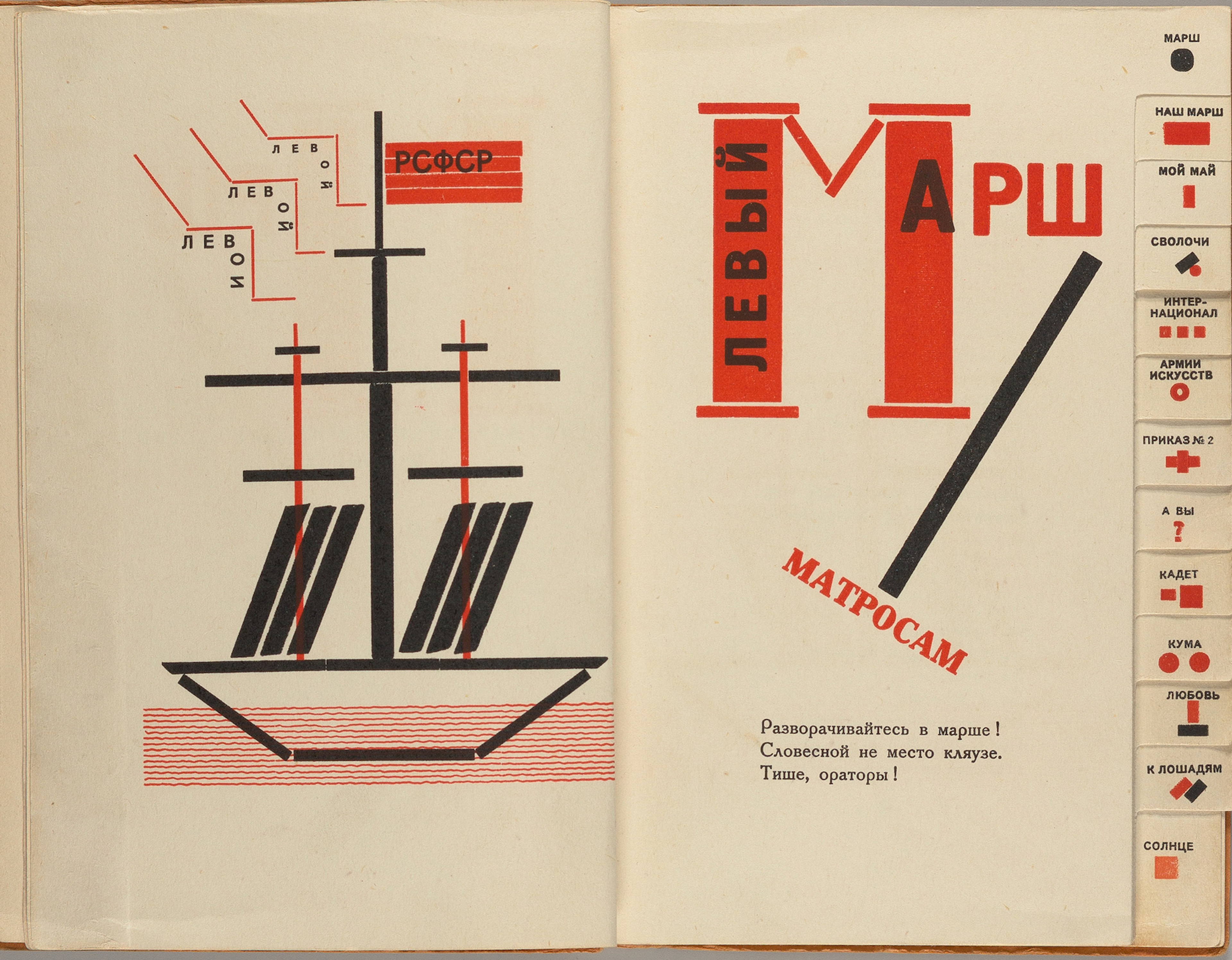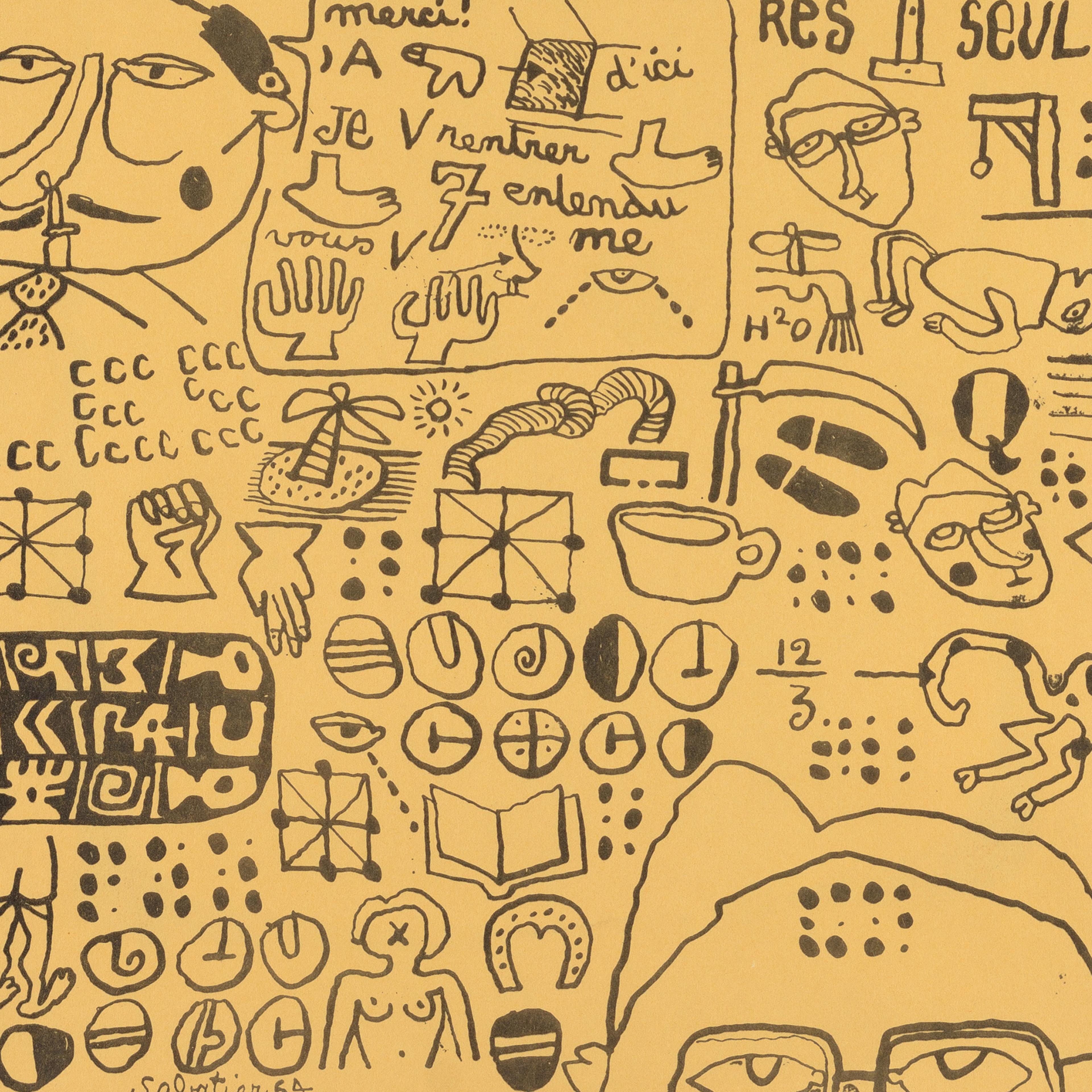Constructivism and Concrete Art

Geometric abstraction in art became increasingly widespread internationally between World War I and World War II. Among many avant-garde and modernist artists, landscape and portrait paintings gave way to stripped-down compositions of shapes and forms, devoid of any symbolic or referential meaning. Seeing greater purpose and relevance for themselves as artist-engineers and designers, many artists abandoned easel painting and studio art altogether in favor of book, journal, poster, textile, and household object design.
Books and journals helped fuel the growth of non-representational art and design worldwide, through both their content and their appearance. Works exhibited in this section feature landmarks of avant-garde design, celebrated for their inseparability of text and image, dynamic layouts, non-conventional uses of metal type as pictorial devices, and incorporation of photography and photomontage.
Selected Artworks
Press the down key to skip to the last item.
Réverbères, Lettrism, and Art Brut

Formed in late 1937, the artist group Les Réverbères espoused experimentation across art forms. The group organized exhibitions, jazz concerts, dances, readings, and re-stagings of Dada plays by Tristan Tzara, Georges Ribemont-Dessaignes and Guillaume Apollinaire. Most active between 1938 and 1939, the group presented itself as a neo-Dada “refuge” from Surrealists and Surrealism which they believed had run its course, and firmly believed in the practice of “art as resistance." The word réverbères (“street lamps”) is itself an homage to Dada, and a clear reference to a key work by Tzara. Réverbères artists exploited handwritten text and stencil lettering in their publications for additional expression, and often combined various paper types, sizes and colors.
Artists associated with the Lettrisme (or “Lettrism” in its English-language form) art movement held similar reverence for the expressive potential of letterforms and pictograms. Convinced that “new art needs new forms,” Lettrist artists used letters as purely pictorial elements, rather than as components of words with pre-established meanings.
Selected Artworks
Press the down key to skip to the last item.
Activism and Actionism: Publication as Provocation

None of the works in this exhibition were created simply as vehicles for personal, individual expression. They all carry an underlying or overt attempt by their authors to impact and inspire change in the worlds around them, either in the realm of art, culture, government, interpersonal relations, or daily society. In the works in this section, artists directly address issues of misogyny, authoritarianism, violence, inequality, inhumanity, economic disparity, complicity, and complacency. Performance and action artists expressed urgent and extreme concerns through extreme actions: public nudity, acts involving bodily fluids and self-harm, and uses of national and religious imagery in manners considered blasphemous or pornographic are among the tactics artists utilized to try to disrupt, awaken, and rally the world to action. For these artists, books and magazines offered a way to extend the reach of their live events and record them for posterity. The collage, décollage, and cut-and-paste compositions with found text and imagery in these publications capture the chaos and tumult of the times and conditions to which these artists were responding, and directly inspired the punk-aesthetic that later emerged on album covers and flyers.
Selected Artworks
Press the down key to skip to the last item.
